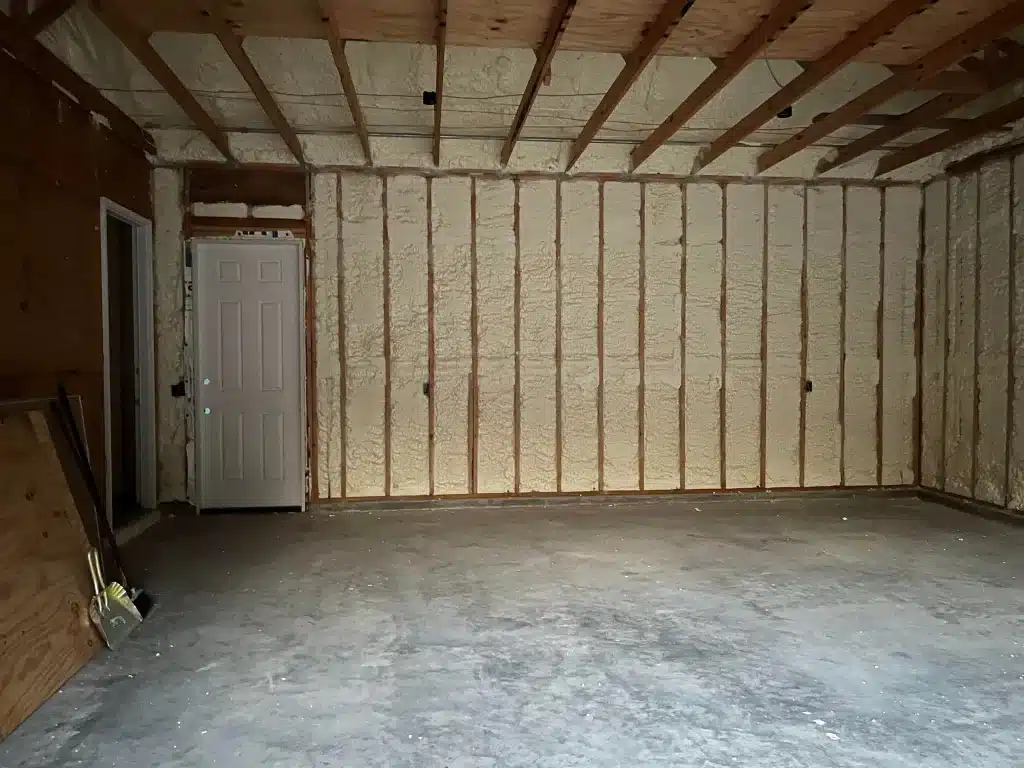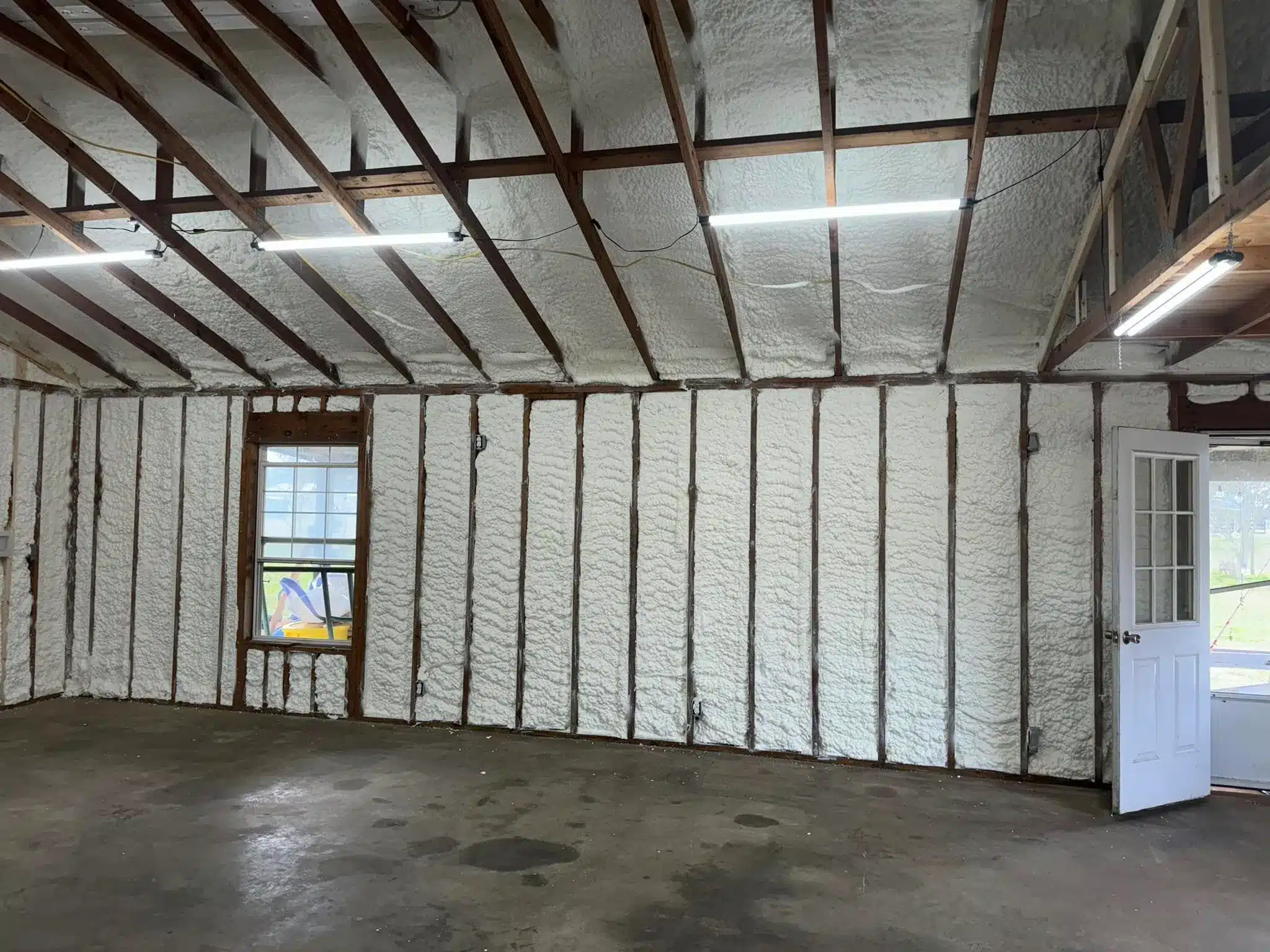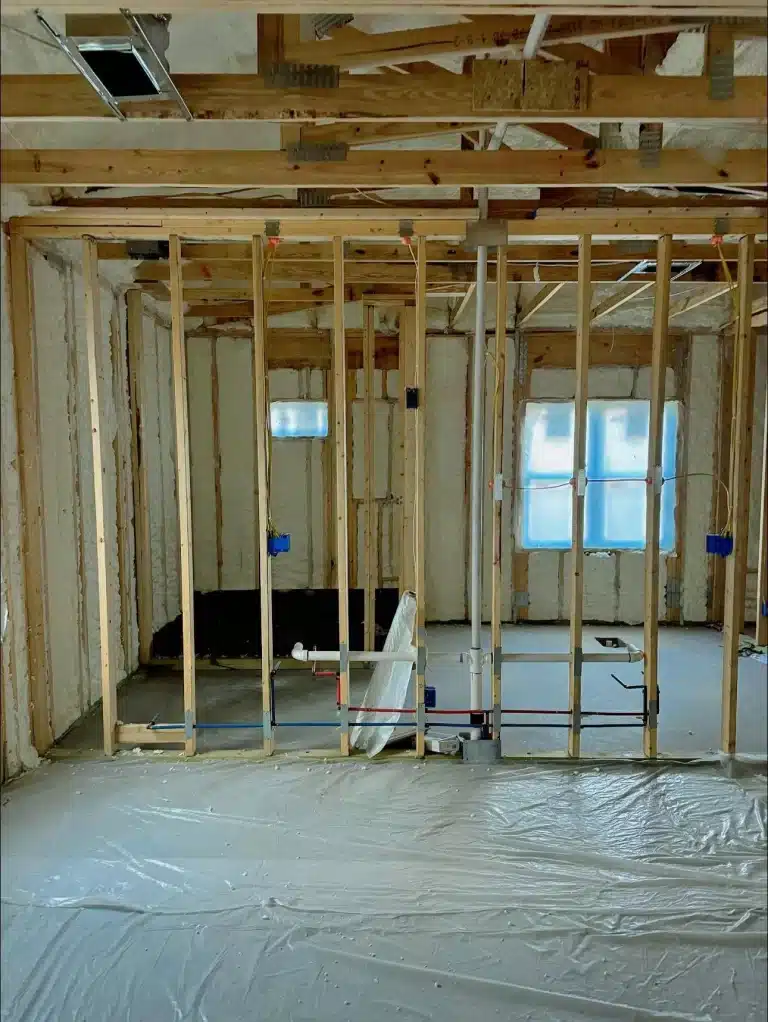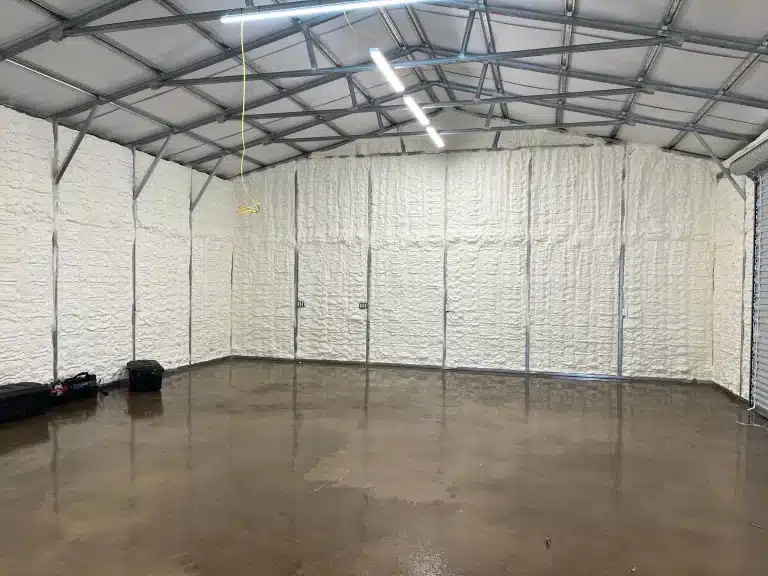Homes in Escambia County benefit most from insulation systems that account for high humidity, frequent storms, and seasonal temperature swings. Closed-cell spray foam insulation, blown-in cellulose, and fiberglass batts are the most suitable residential options in this region. Each performs differently across factors like moisture control, air sealing, and thermal resistance.
The insulation method chosen should be based on attic design, wall cavity accessibility, and long-term durability needs. This guide outlines how different materials compare under Escambia-specific conditions, using practical data and local building standards.
Performance of Insulation Types in Escambia’s Climate
High humidity and hurricane risk in Escambia demand insulation that resists moisture, minimizes air infiltration, and stabilizes interior temperatures year-round.
| Insulation Type | Best Use Area | Moisture Resistance | Air Sealing Ability | Thermal Performance (R-Value per inch) | Durability | Mold Resistance |
|---|---|---|---|---|---|---|
| Closed-Cell Spray Foam | Roof decks, crawl spaces | Excellent | Excellent | 6.0-7.0 | High | High |
| Open-Cell Spray Foam | Interior walls, attics | Moderate | High | 3.5-4.0 | Moderate | Moderate |
| Blown-In Cellulose | Attic floors, wall cavities | Moderate | Moderate | 3.2-3.8 | Moderate | Treated for resistance |
| Fiberglass Batt | Open wall cavities | Low | Low | 2.9-3.8 | Moderate | Low |
Bonus Tip: In hurricane-prone areas like Escambia, closed-cell spray foam adds structural strength to roofs and walls when installed properly.
Practical Insights for Escambia Homeowners
Spray Foam Offers Highest Performance
Closed-cell spray foam acts as a vapor barrier and significantly reduces air leakage. It is particularly effective in homes with ductwork in unconditioned attics. This insulation method aligns well with Florida Building Code standards for high wind zones.
Blown-In Cellulose Balances Cost and Function
For homeowners seeking a retrofit-friendly solution, cellulose offers decent thermal resistance and fits well around obstructions. It performs adequately in moderate moisture areas if combined with vapor retarders.
Fiberglass Requires Controlled Conditions
Fiberglass insulation functions best in dry, ventilated cavities. Without a proper vapor barrier, it can trap moisture, leading to mold issues in Escambia’s damp climate. This type is common in newer builds but requires precise installation to prevent gaps.
Bonus Tip: Use a blower door test post-installation to detect and fix air leaks, especially in older homes with mixed insulation types.
Technical Properties for Comparison
| Property | Closed-Cell Spray Foam | Blown-In Cellulose | Fiberglass Batt |
|---|---|---|---|
| R-Value (per inch) | 6.0-7.0 | 3.2-3.8 | 2.9-3.8 |
| Perm Rating (Moisture Barrier) | <1 (Vapor barrier) | 5-10 (Moderate) | >30 (Poor) |
| Air Infiltration Control | Excellent | Moderate | Poor |
| Installation Flexibility | Low | High | Moderate |
| Settling Over Time | None | Moderate | None |
| Sound Dampening | High | High | Low |

Regional Data Supports Insulation Upgrades
According to the U.S. Department of Energy, Escambia County falls in Climate Zone 2A, requiring R-30 to R-38 attic insulation and R-13 to R-15 wall insulation. Data from the Florida Solar Energy Center shows spray foam reduces HVAC energy usage by up to 20% in this zone (Source).
Key Evaluation Points Before Choosing
- Moisture Levels: Homes with poor roof drainage or crawlspaces benefit more from closed-cell spray foam.
- Accessibility: If walls are intact, blown-in insulation may be the only viable non-invasive option.
- Ventilation Design: Attic ventilation impacts whether vapor-permeable insulation will work without trapping moisture.
- Structural Considerations: Older homes may lack structural framing compatible with spray foam weight or expansion.
Bonus Tip: Schedule insulation upgrades outside hurricane season (June–Nov) to prevent project delays and benefit from better availability.
Residential Services Available from This Business
Prestige Insulation Solutions provides key insulation services suitable for Escambia homes:
- Spray Foam Insulation: Ideal for moisture-prone and air-leaky areas like attics and crawlspaces.
- Blown-In Insulation: Suitable for attic retrofits and dense-packed wall cavities.
- Fiberglass Insulation: Used in new wall framing where controlled airflow is present.
- Insulation Removal: Safely eliminates damaged, mold-prone, or outdated materials before reinstallation.
Common Questions People Ask Before Choosing
What is the safest insulation type for humid climates?
Closed-cell spray foam, due to its moisture resistance and mold prevention.
Can I combine two insulation types?
Yes. For example, closed-cell spray foam in crawlspaces and blown-in cellulose in attics.
How long does spray foam last?
Properly installed spray foam can last over 30 years without settling or losing thermal value.
Should I insulate the roof deck or attic floor?
Roof deck insulation is better for homes with HVAC in the attic; otherwise, floor insulation is sufficient.
Summary of Best Fit Options
Closed-cell spray foam delivers the highest performance in Escambia’s wet, hot conditions. Blown-in cellulose is viable for retrofits. Fiberglass remains an option when installed in well-ventilated, moisture-free cavities. Evaluate attic structure, existing insulation, and ventilation before selecting.
Talk to an Expert Before You Decide
Prestige Insulation Solutions supports Escambia homeowners with localized solutions built for Florida’s climate. For advice on choosing the right insulation type, email [email protected] or call (850) 429-4969 to discuss your home’s conditions directly.
Frequently Asked Questions
How can I tell if my insulation is working?
Check for stable indoor temperatures, reduced HVAC runtime, and minimal draft near openings.
Does insulation require maintenance?
Spray foam and fiberglass rarely need maintenance, but cellulose may require topping off after years.
Can insulation reduce indoor humidity?
Yes, particularly closed-cell spray foam when combined with proper HVAC design.
How do I prevent pests from nesting in insulation?
Use pest-treated cellulose or closed-cell spray foam, which forms a hard barrier unattractive to rodents.
Will insulation help with noise control?
Yes. Cellulose and spray foam both reduce airborne sound transmission effectively.






